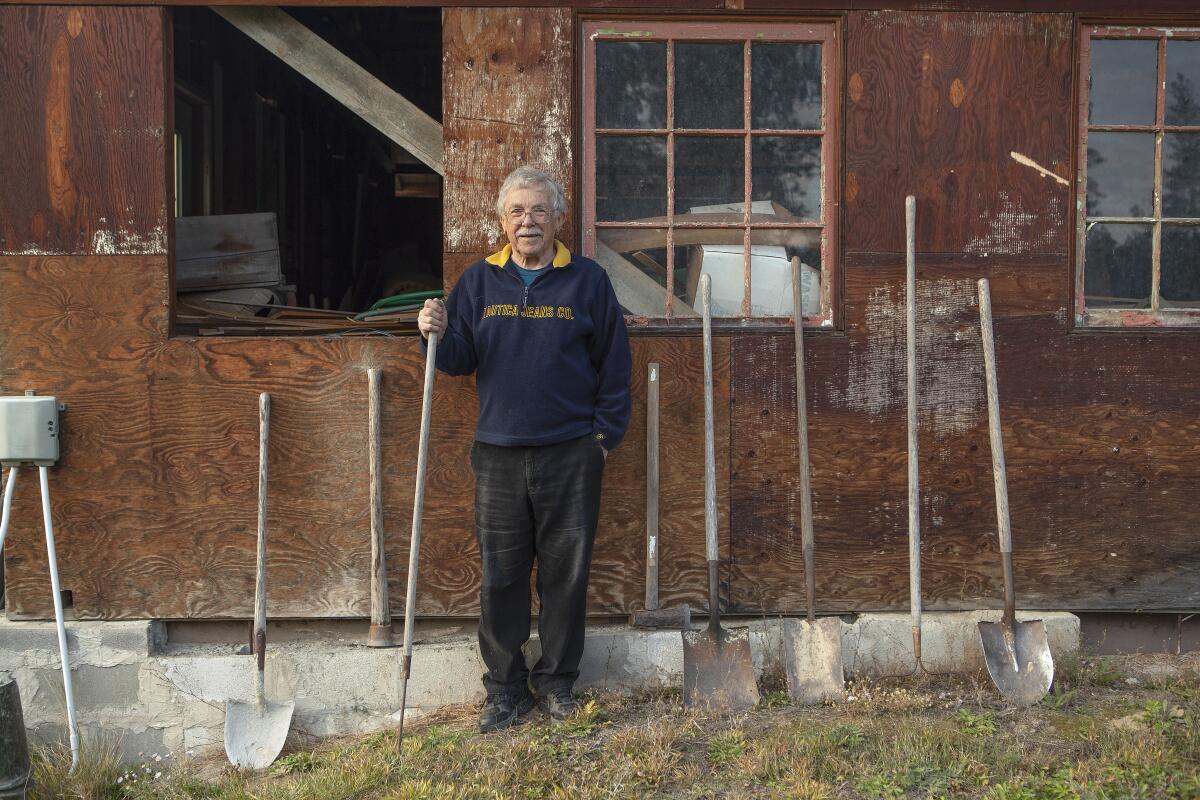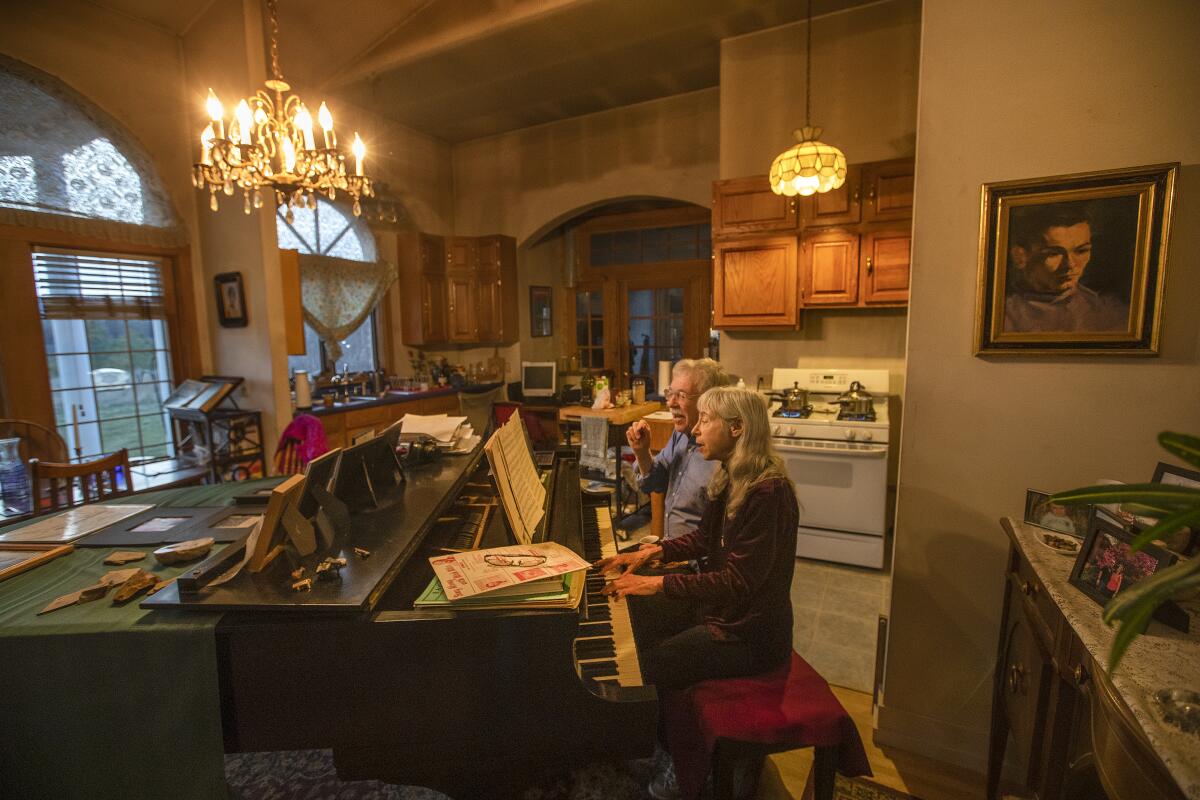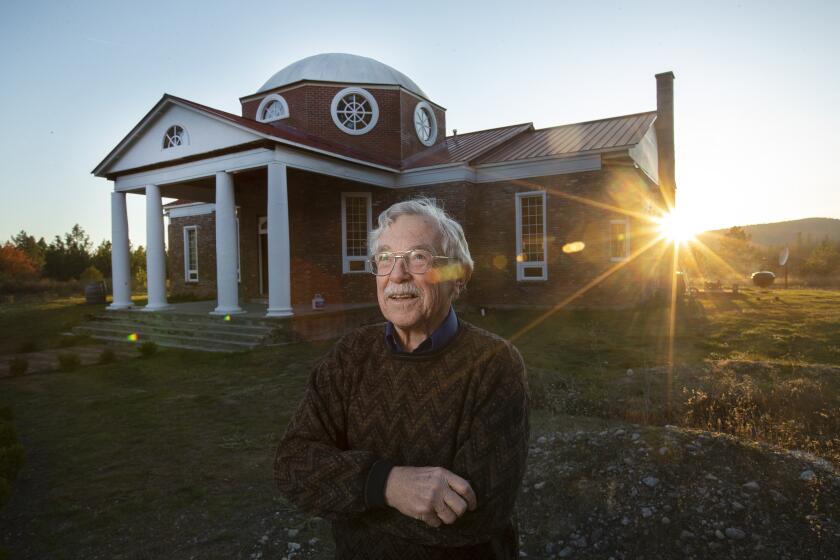How do you build a replica of Monticello? Brick by scavenged brick

- Share via
Dan Sisson laughs about his ignorance today, about the fact that he had no idea what it would take to build a replica of Monticello, Thomas Jefferson’s iconic home, in the middle of nowhere in eastern Washington.
But it wasn’t always funny at the time.
His son, Alan Sisson, remembers arriving from Corvallis, Ore., to lay foundation timbers two decades ago. “It was kind of a nightmare,” he says.
Dan Sisson has spent more than three decades planning and building a replica of Monticello, Thomas Jefferson’s iconic home, in an isolated timberland in eastern Washington.
His father didn’t have the beams at the site. He didn’t have the right tools. The site wasn’t ready.
A job that “should have taken two or three days took two weeks,” says Alan Sisson, described by his father as the first hero of the project.
Dan Sisson recalls a day when friends came to help with the eight-sided rotunda foundation. “We had three PhDs and a master’s degree,” he says. “We couldn’t figure it out.”
Sisson was, with the help of a few friends and fascinated passersby, doing all the work himself. Scrounging for building materials was a challenge. Over two years, Sisson drove to a Spokane redevelopment zone, after teaching classes at Eastern Washington University, to pick over piles of used bricks. He flung each 5-pound brick over other heaps of bricks to load them onto the back of his pickup, which could carry, at most, 250.
He drove the bricks 43 miles and stacked them along his one-lane entry road. Students helped at times, but Sisson made most of the roughly 120 trips alone, collecting about 30,000 bricks — more than he eventually needed.
The architectural star of Jefferson’s Monticello is a graceful dome — a unique structure that Sisson had no hope of finding in a salvage yard. Who has a used 28-foot-diameter dome?
Sisson asked for bids. The lowest was $55,000, far more than he could afford.
But like so often with Monticello West, Sisson found a way. Two weeks after getting the bid, he met Nathan Stime, a primary care physician, former missionary and, as fortune had it, a fellow hunter.
As Stime remembers, “I didn’t know Dan, but I got to like him immediately.”
Stime built aluminum boats as a hobby inside his enormous workshop north of Spokane. Maybe he could build a dome? He offered on one condition: he would do it for cost only.
Stime cut and welded 32 sheets of aluminum into a dome. Price: $1,565.

Today, Monticello West the house is 90% complete and comfortable for entertaining. Sisson’s wife, Karen Meyer, cooks dinner for guests and often plays violin or piano afterward.
In the winter cold and snow, the couple move into the house’s “Big Room” to save heat by closing off their spacious book-lined library, the rotunda and the rest of the house.
They pass every New Year’s Eve alone, Meyer says.
“We cook dinner, we have champagne and we dance.”
More to Read
Sign up for Essential California
The most important California stories and recommendations in your inbox every morning.
You may occasionally receive promotional content from the Los Angeles Times.








